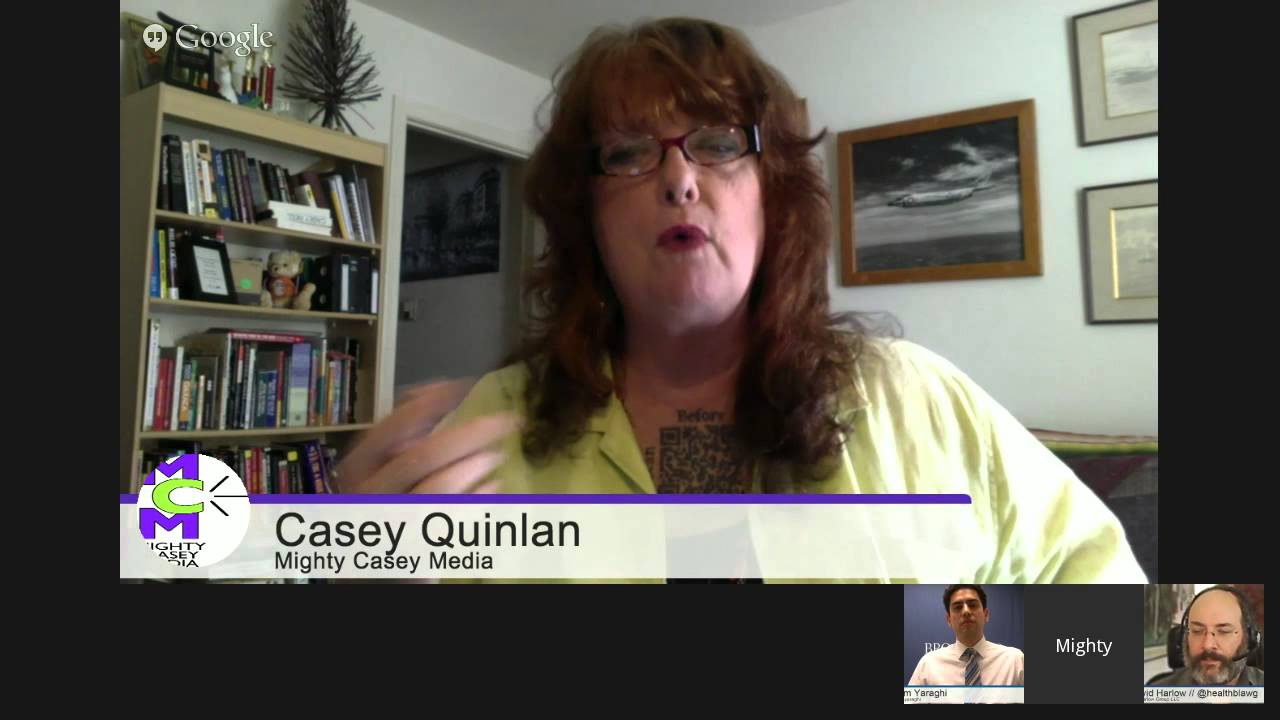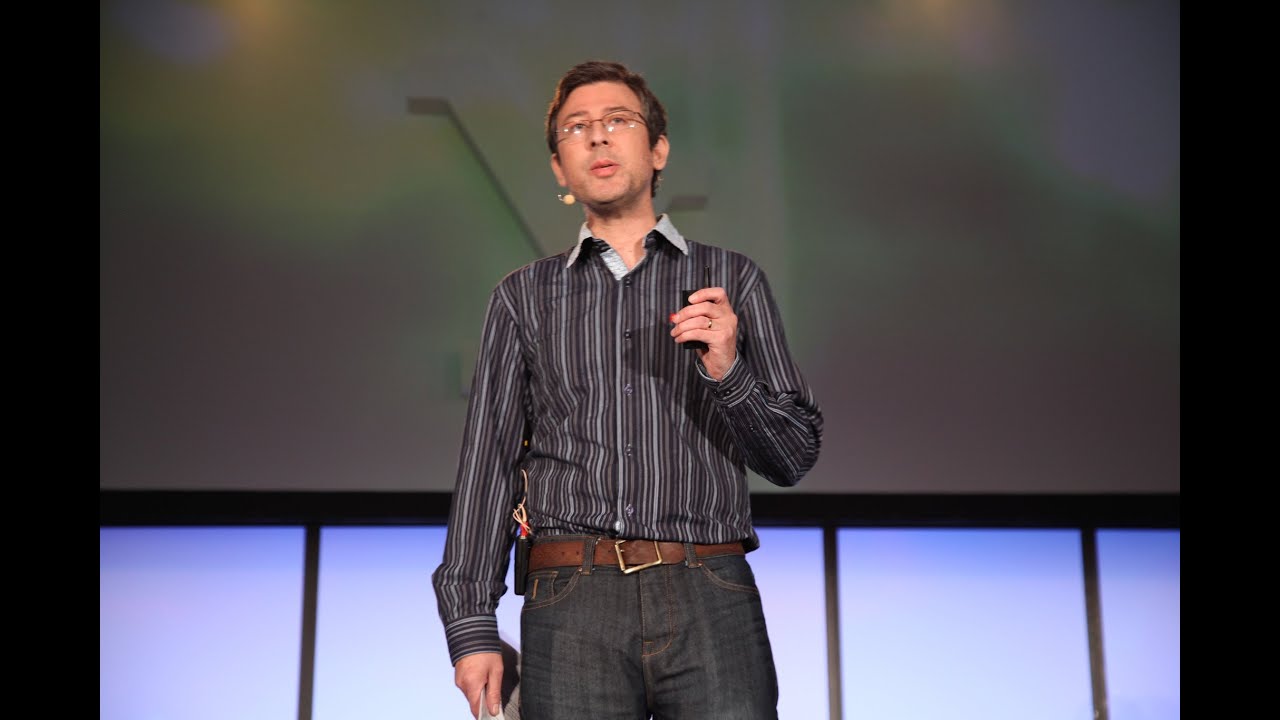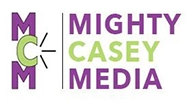If you’ve been paying attention, you know that yours truly got the chance to attend the annual Cochrane Colloquium in Edinburgh in September this year, thanks to a travel stipend from SPM, a #PatientsIncluded bursary from Cochrane UK, the hosts of the 2018 Colloquium, and a stipend from the NHS for the #BeyondTheRoom project to help cover the event for the global audience. And I’m sure there are a good number of you who are still thinking, “That’s great, but what the heck is Cochrane? And how did they get to be the ones running the ‘Hogwarts Sorting Hat’ of global medical evidence?” Forgive me, but I’m a comedy writer, and that breaks through from time to time, no matter how hard I try to stifle it. Anyway, Cochrane is named for a Scottish doctor, Archibald Leman “Archie” Cochrane, who wrote “Effectiveness and Efficiency: Random Reflections on Health Services” (the link will let you download the whole book in PDF) in 1972. Archie Cochrane advocated for randomized clinical trials (RCTs) for, well, everything – treatments, practice methods, research protocols, an “all of the things” approach, on a loop – which was not how medicine was being practiced under the prevailing “doctor knows best” practice model in place across the globe. “The art of medicine to preserve autonomy, the science of medicine to preserve authority” rules pointed out by many people seeking to make medical science more science than “because it’s how I do things” – those rules have been snarked at by both your correspondent, and Dr. Al Mulley at Dartmouth, among a host of others. Archie Cochrane influenced the thinking, and practice, of many other clinicians with his thought leadership on practice variation, practice standardization, and the use of RCTs to fine tune medical science. One of the people he influenced was Iain Chalmers, who, in 1993,…
Guess who got invited to WHO? No, really. The World Health Organization (WHO) invited yours truly to its First Global Experts’ Consultation in service of building a WHO framework for patient and family engagement. This is all due to my part in the ongoing anvil chorus that is the new Patient & Family Engagement Roadmap, developed by a group of dedicated folks from all parts of the healthcare compass over the last couple years, with funding from the Gordon & Betty Moore Foundation. I spent just over two days in Geneva, most of the time head-down in discussions about how the global health system – a patchwork of services delivered by an even patchwork-ier cadre of healthcare delivery systems – can better serve the needs of the people/patients who seek medical care and health information from them. This post will not attempt to report everything I saw/heard/thought/felt in that jam-packed 16 hours of ideas and outlooks. What I’ll share is my perspective on the challenges, the opportunities, the pitfalls, and the hopes that – in my view, at least – emerged during that lightning round of global spitballing. Challenges There’s an old joke that asks, “What’s an elephant?” The answer: “A mouse designed by a government committee.” That’s the risk, and challenge, to any attempt to build a definable set of standards for a human effort. Education, transportation, trade, infrastructure, communication, medicine – all require some sort of standardization to make them useful to more than one or two people huddled over a campfire. A study of history will show that as much as we humans are great idea generators, trying to get the rest of the tribe to adopt our new idea isn’t easy. The father of quantum mechanics, Max Planck, said it best: “A new scientific truth does not…
The infographic below popped up in my Twitter feed when an e-patient colleague from the multiple sclerosis community tagged me with a “what the HELL is this!?!” … and the excrescence below. Let me set the scene for you – this is digital collateral from a software company, Medrio, that on its website landing page says it provides “simple, fast, and affordable tools for the collection of data in clinical trials.” It appears that the company is all about the cartoon animals, since they’ve got a cartoon cat in a lab coat welcoming you to their digital litter box domain. It also appears that Medrio is happy to think of clinical trial subjects – you know, the ones called “patients,” or, alternatively, “people” – as sus scrofa. If you don’t speak Latin, that’s the species classification for … PIGS. This points up a pernicious, perpetual problem in too many precincts in healthcare. People/patients are seen either as dumb – possibly even dumb animals – and treated with the same level of respect. It’s not often, though, that an organization that actually thinks of patients this way fully uncloaks, and shows their wrong-headedness in full color. OK, you’ve waited long enough. The infographic I’m talking about is pasted below. PLEASE make some very loud noise online, show the world that this jerkbaggery will not stand.

It’s been a fun week here in Mighty Casey Media Land. We kicked off the week a little early (on Sunday) – the 411 on that is available here, and some of the social exhaust is available on Storify here and here. One member of the e-patient posse worried that the guy was gon’ have to enter witness protection, given the avalanche of opprobrium aimed his way from the expert-patient community. Thank god. I was worried this guy might need to go into the witness protection program. TY @MightyCasey – #FTW! https://t.co/xIayus5Gao — Hurt Blogger | Britt (@HurtBlogger) June 17, 2015 In an email thread among a group of expert patients working on aggregating and curating patient-useable outcomes reporting tools, Dr. Corrie Painter said she had called the Brookings Institution, the think tank where the author of the US News piece that set my hair on fire does his think-tank thing, and left a terse message on the Governance Studies main line about pontificating patriarchal putzes (technical term). Given my willingness to talk to anyone, any time, if it moves the needle on healthcare system transformation, I went one better and called the *other* number on the guy’s bio page. I expected to wind up leaving a voicemail, but … He. Answered. The. Phone. We talked for about 30 minutes, during which I assured him that I did *not* think that Yelp reviews were the ne plus ultra, or even a thing, when it came to outcome metrics on physicians and other clinical providers of medical services. But, as I pointed out in my “I’m channeling Lewis Black, with boobs, in healthcare here: righteous rage + cutting humor = driving that point home!” post, what real metrics are *available* to patients seeking intel on the expertise and outcomes of the…
Paul Levy, the former CEO of Beth Israel Deaconess Medical Center in Boston, put up a post last week saying that the Triple Aim – improving population health, improving the experience of care, improving per capita healthcare cost – was poorly aimed, and totally missing its “make healthcare better” mark. It’s a chewy, tasty read, with an even chewier and tastier thread of comments. The money shot for me: “the real battles over power, money, customer choice, and cost” are indeed still happening far, far away from the point of care, and compromising the patient’s experience, the community’s health, and the ability to control spiraling costs. Of the three legs of the Triple Aim stool, the cost piece is the biggest barrier to its implementation. Can you think of any US industry that would willingly transform itself outta $1T+ in revenue per year? That’s the ultimate economic outcome of the Triple Aim, and I can hear and feel the resistance of the medical-industrial complex to ending their arms race toward “market dominance” via daVinci systems, proton beam facilities, soaring marble lobbies, and equally soaring temples full of hospital beds … when what we really need is hundreds (thousands?) of small clinics across the landscape helping people get or stay healthy via great primary care, not tertiary hospital resurrections. Payers and big health systems, EHR vendors, policy wonks all negotiate over the patient’s supine form (and the heads of most clinicians, to be fair) to determine how to divide up the $3T+/year their arms race serves up. Do we have a prayer of Triple Aim in this landscape? I dunno, but I’m fighting a ground war alongside my patient-side band of guerilla compatriots to see if we can drive some revolution from the grassroots. ‘Cause the folks in suits ain’t moving fast enough toward change.
Spending one’s days on the advocacy beat out here on the Wild Wild Web can be hugely rewarding. Like, say, when you start getting recognized by organizations like the WHO as a strong voice for people-who-are-patients. Then there are the days when you get called f***ing a**hole by strangers for simply speaking up. This is not a unique problem for patient advocates – this happens to anyone who speaks up in service of changing a cultural norm. Just ask MLK, who was trolled by none other than the FBI, who told him he should just kill himself. Imagine the fun the FBI could have had on Facebook, if MLK vs. FBI on Facebook had been a possible-thing in 1964. It can happen in the e-patient game, too, as shown in the Bill Keller/Emma Gilbey Keller/Lisa Bonachek Adams/NY Times dustup over whether or not patient blogs, particularly those about cancer, are TMI (Too Much Information – translation: “ew, gross”). Just being a woman online (guilty as charged) can be enough to draw the gimlet eye, and ire, of a mob of trolls. The #gamergate mess – if you click that link, pack a lunch, a raincoat, and some serious antibiotics – is an example of that. I recently tripped over a compelling piece on the Guardian’s site. The piece, by Lindy West, was about how she had been hard-trolled by someone who had gone so far as to create a Twitter handle that mimicked Lindy’s recently dead father, who she grieved for deeply. And who used that Twitter handle to troll her about her stance on rape threats. My dad was special. The only thing he valued more than wit was kindness. He was a writer and an ad man and a magnificent baritone (he could write you a jingle and record it on the same day) – a lost breed…
Most of the people I meet in my voyages ’round healthcare system transformation, grassroots edition, arrived at the portal of #epatient via a trip through the medical-industrial complex. Either they, or someone they cared for, wound up getting “a thing” – cancer, Parkinson’s, multiple sclerosis, player to be named later – and they found themselves inside the medical care delivery system, bewildered, and looking for answers. In short, most – not all, by any means, but most – are over 40. Imagine my surprise, and delight, when I was sent a report on a survey conducted with 385 randomly selected patients across the US*, with most of the responses coming from 18 to 35 year old millennials (people born 1982 and after). The survey asked them their opinions on shared decision making, open notes, and shared medical visits, three new medical practice models that are rising in adoption. Here’s the context of the survey questions: Shared decision-making involves the doctor and patient evaluating multiple treatment options and deciding together on the best course of action. Open notes is a policy allowing patients to view the medical notes doctors take about them during visits, which includes accessing those notes from home. Shared medical appointments, or “group visits,” involve attending an extended (60- to 90-minute) medical appointment with 10 to 15 other patients and one or more physicians. The survey results make me think we might finally be reaching a tipping point toward positive change, given that a big majority (76%) of respondents said they were extremely or very likely to use shared decision making. Over 60% were extremely or very likely to welcome open notes: The demographics of the survey respondents was a pretty representative sample as far as chronic conditions go: One surprise in the demographic detail was that more men responded than women….
Guess who got invited to WHO? No, really. The World Health Organization (WHO) invited yours truly to its First Global Experts’ Consultation in service of building a WHO framework for patient and family engagement. This is all due to my part in the ongoing anvil chorus that is the new Patient & Family Engagement Roadmap, developed by a group of dedicated folks from all parts of the healthcare compass over the last couple years, with funding from the Gordon & Betty Moore Foundation. I spent just over two days in Geneva, most of the time head-down in discussions about how the global health system – a patchwork of services delivered by an even patchwork-ier cadre of healthcare delivery systems – can better serve the needs of the people/patients who seek medical care and health information from them. This post will not attempt to report everything I saw/heard/thought/felt in that jam-packed 16 hours of ideas and outlooks. What I’ll share is my perspective on the challenges, the opportunities, the pitfalls, and the hopes that – in my view, at least – emerged during that lightning round of global spitballing. CHALLENGES There’s an old joke that asks, “What’s an elephant?” The answer: “A mouse designed by a government committee.” That’s the risk, and challenge, to any attempt to build a definable set of standards for a human effort. Education, transportation, trade, infrastructure, communication, medicine – all require some sort of standardization to make them useful to more than one or two people huddled over a campfire. A study of history will show that as much as we humans are great idea generators, trying to get the rest of the tribe to adopt our new idea isn’t easy. The father of quantum mechanics, Max Planck, said it best: “A new scientific truth does not triumph by convincing its…
As the author of a rabble-rousing call to action, with a heavy dose of humor, on managing medical care called Cancer for Christmas, I have some street cred on both cancer and on dealing with tough personal health conversations over a Christmas standing rib roast dinner. My hair has been on fire since I heard that Myriad Genetics had patented genes, back in the previous millennium. First, how in the pluperfect f^ck is a naturally-occurring part of the human body – microscopic or not – patentable?? Second, why is a commercial enterprise allowed to dictate scientific research at a university? If they’re funding it … maybe. If they’re trying to prevent it from moving forward? What. The. F^CK? I expect crass commercialism at Walmart. When it comes to cancer research, a primary profiteering motive should be a capital offense. Yep, off with their heads, baby. It recently came to my attention, thanks to my buddy BraveBosom‘s tip-off … Myriad created campaign: “Make hereditary cancer a holiday centerpiece.” Spamming #BRCA and #BCSM. http://t.co/PrC0E3rIeK — Brave Bosom (@BraveBosom) December 19, 2013 … that the trolls at Myriad Genetics are up to newer, stinkier tricks: “helping” us make cancer a holiday centerpiece! Hey, Myriad, here’s a tip: WE DON’T TRUST YOU. You’re trolls. Support from you? I’d sooner eat dinner with Hannibal Lecter. If you haven’t heard of Myriad Genetics, here’s the Cliff’s Notes version: Founded in Salt Lake City in 1992 by, among other names, a Nobel Prize winner in chemistry, Walter Gilbert In 1997, Myriad is granted a patent on BRCA1 (one of two genes that indicate high risk of breast and ovarian cancer) In 1998, Myriad is granted a patent on BRCA2 (2nd of two breast cancer risk genes) BRCAnalysis, the company’s genetic test for breast cancer risk, costs $4,000 (you can get an entire genomic sequence for less than that – the Myriad…

I had the great good fortune of being tagged as an ePatient Scholar for the 2013 edition of Stanford Medicine X. That allowed me to sit at the feet – literally, since the ePatients were the mosh-pit for the three day conference plenary stage – of some of the best and brightest minds in healthcare. And guess what? Many of those best/brightest were … PATIENTS. MedicineX (a/k/a MedX and #medx) is the uber Patients Included medical conference. It grew from seeds planted at conferences like Health 2.0 and Patients 2.0, for which seeds-to-beautiful-flowers gardener credit goes to Dr. Larry Chu and his team from Stanford Anesthesiology AIM Lab, who seem to prestidigitate rabbits out of hats without breaking a sweat. Or the hats. Or the rabbits. MedX – in my opinion, at least – trumps every other Patients Included event by not just including patients, but by putting them front and center throughout the program. In fact, I cannot think of a session that I attended that didn’t have someone who was there primarily as a customer of healthcare (commonly called “a patient”) on the platform, presenting or participating in a panel discussion. My ePatient socks were knocked off from jump thanks to the opening keynote by Michael Seres and Marion O’Connor on “The New Engaged Patient,” which was the morning keynote on Friday. Michael uses his blog as his personal health record, up to and through a lifetime battle with Crohn’s disease that led to his becoming the 11th patient to ever receive a bowel transplant, and only the 6th to survive that transplant experience. Michael is hilarious, and Marion is exactly the sort of caring brainiac any patient would like bedside as s/he battled a life-threatening illness. Here’s the video of their session: The rest of the day played out as a firehose of ePatient awesome,…



